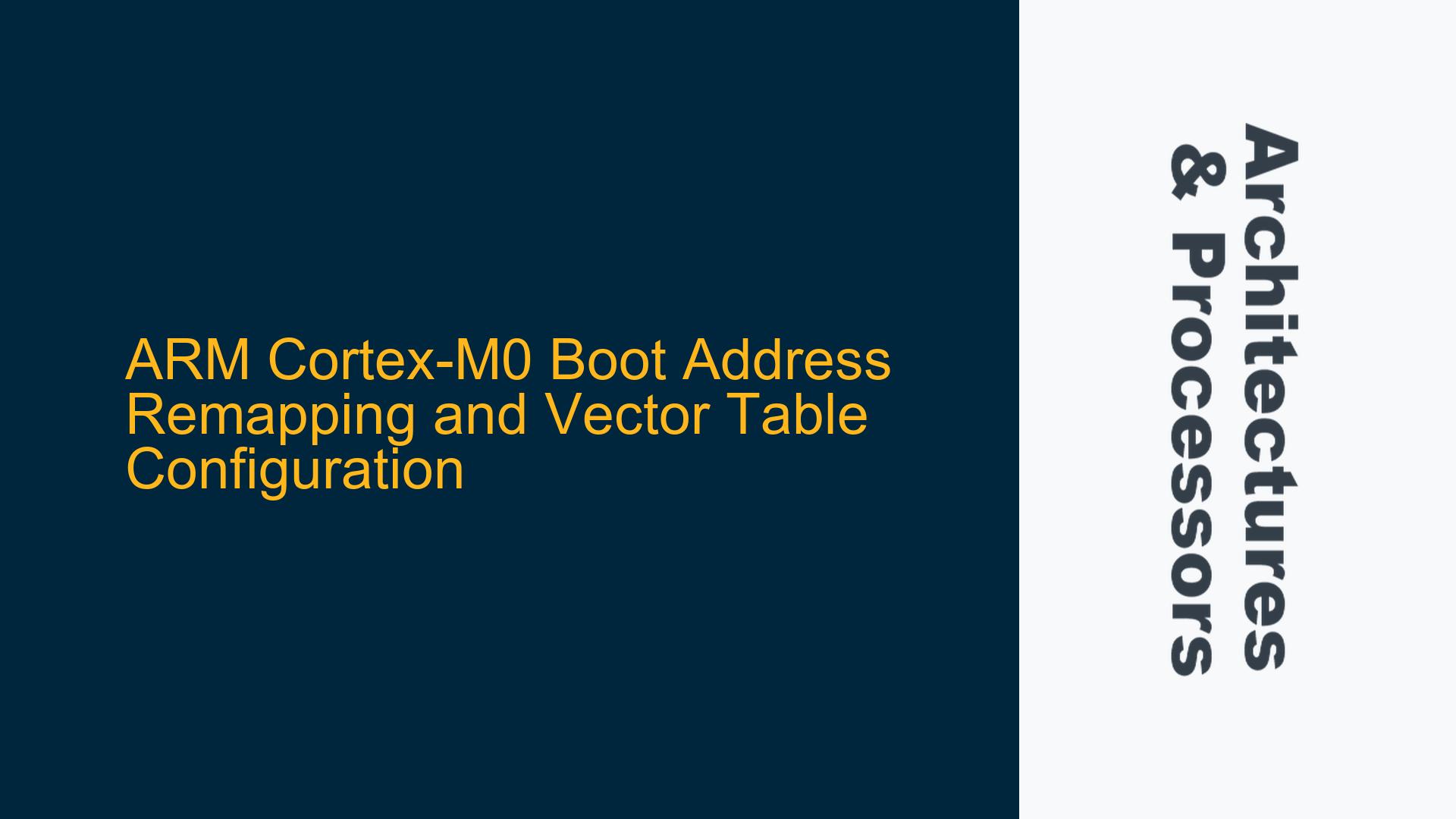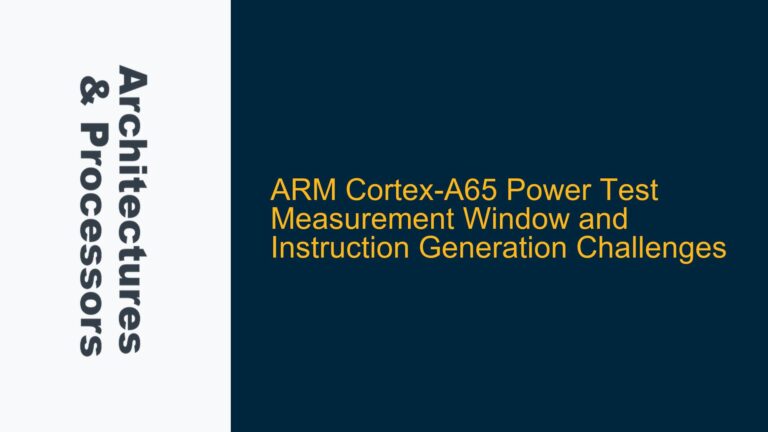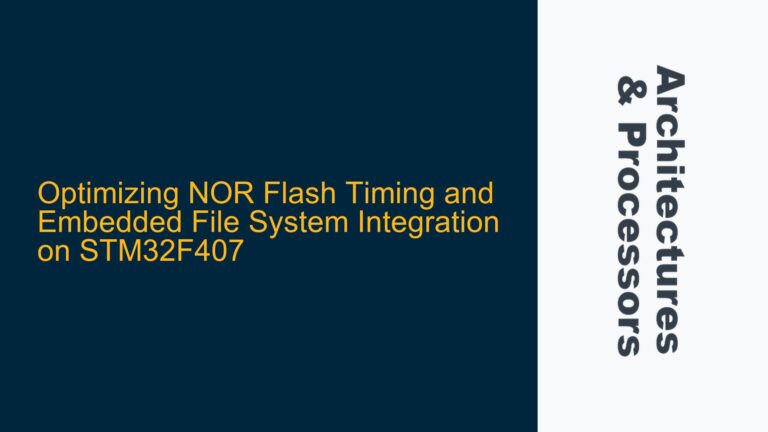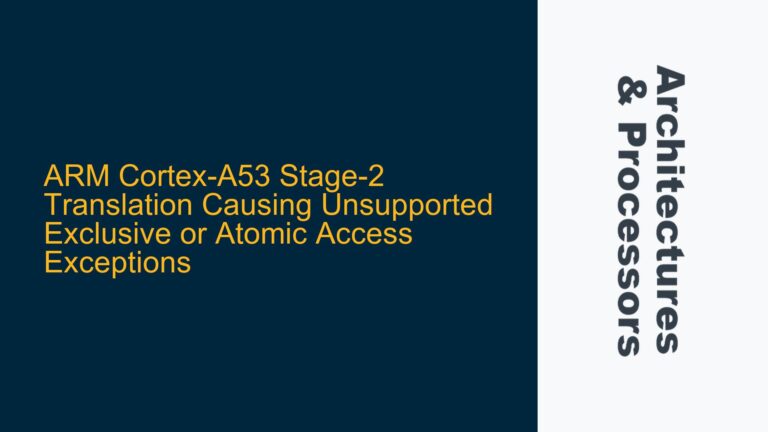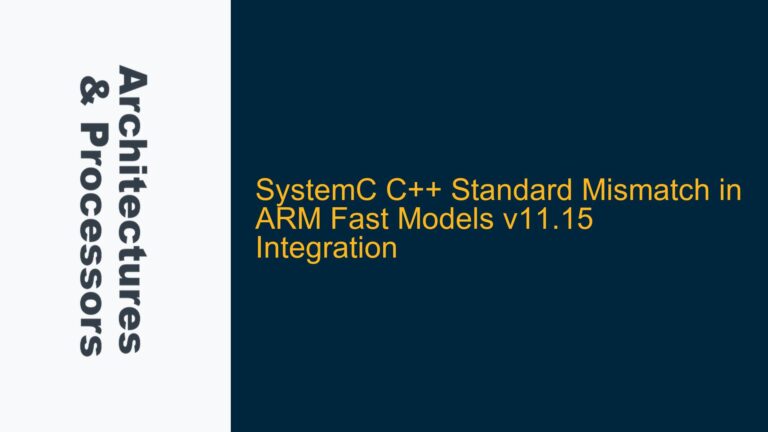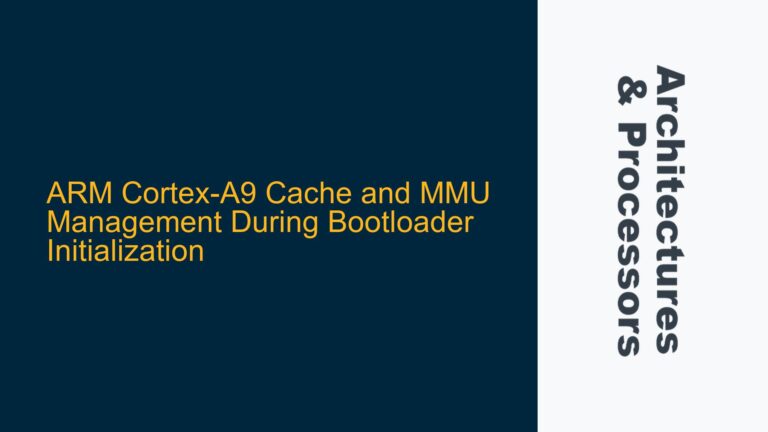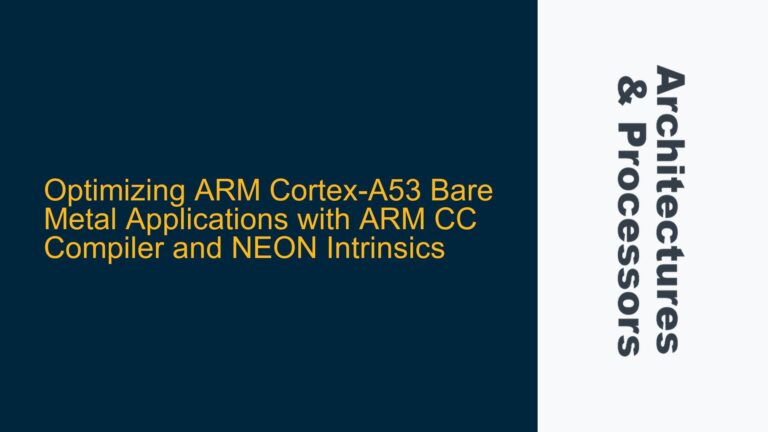Cortex-M0 Boot Behavior and Fixed Reset Vector at 0x0000_0000
The ARM Cortex-M0 processor, like other Cortex-M series processors, is designed to start execution from a fixed reset vector located at address 0x0000_0000. This behavior is hardwired into the processor’s design and cannot be changed through software configuration alone. Upon reset, the Cortex-M0 fetches the initial stack pointer value from address 0x0000_0000 and the reset handler address from address 0x0000_0004. These two values are critical for the processor to initialize its stack and begin executing the first instruction.
In the scenario described, the system includes a ROM region from 0x0000_0000 to 0x0000_0FFF and a RAM region from 0x0000_1000 to 0x0000_1FFF. The goal is to start execution from the RAM region at 0x0000_1000 instead of the default ROM region. However, the Cortex-M0’s fixed reset vector behavior makes this impossible without additional hardware or firmware intervention. The scatter file modification attempted by the user, which specifies the RAM region as the load address, does not alter the processor’s inherent behavior of fetching the initial stack pointer and reset handler from 0x0000_0000 and 0x0000_0004, respectively.
This fixed behavior is a fundamental aspect of the Cortex-M0 architecture, designed to ensure a predictable and consistent startup sequence. While this design simplifies the boot process for many applications, it poses challenges for systems requiring non-standard boot configurations, such as starting execution from a RAM region.
Address Remapping Logic and Vector Table Manipulation
To achieve the desired boot behavior, two primary approaches can be considered: hardware-based address remapping and firmware-based vector table manipulation. Both methods aim to redirect the processor’s initial fetch operations to the desired memory region, but they operate at different levels of the system.
Hardware-Based Address Remapping
Hardware-based address remapping involves modifying the memory map at the bus level to redirect accesses to specific addresses. In this case, the goal is to remap accesses to 0x0000_0000 and 0x0000_0004 to 0x0000_1000 and 0x0000_1004, respectively. This can be achieved using a memory management unit (MMU) or a custom address decoder implemented in the system’s bus fabric.
The remapping logic must be active immediately after reset to ensure that the Cortex-M0 fetches the correct initial stack pointer and reset handler from the remapped addresses. This approach requires careful design to ensure that the remapping logic is initialized and operational before the processor begins fetching instructions. Additionally, the remapping logic must be transparent to the processor, meaning that it should not introduce any additional latency or complexity that could affect the boot process.
Firmware-Based Vector Table Manipulation
Firmware-based vector table manipulation involves modifying the contents of the vector table in ROM to redirect the processor to the desired execution address in RAM. This approach requires that the ROM firmware be modifiable, either through a firmware update mechanism or by including a small bootstrap loader in ROM that copies the vector table to RAM and updates the reset handler address.
The process involves the following steps:
- The ROM firmware initializes the necessary hardware components, including the memory controller and any peripherals required for the boot process.
- The ROM firmware copies the vector table from ROM to RAM, ensuring that the initial stack pointer and reset handler addresses point to the desired locations in RAM.
- The ROM firmware updates the reset handler address in the vector table to point to the entry point of the code in RAM.
- The ROM firmware triggers a soft reset or jumps to the updated reset handler address in RAM, causing the processor to begin execution from the desired location.
This approach requires careful coordination between the ROM and RAM firmware to ensure that the vector table is correctly initialized and that the processor begins execution from the correct address. Additionally, the ROM firmware must be designed to handle the case where the RAM firmware is not yet initialized or is corrupted, ensuring that the system can recover from such errors.
Implementing Address Remapping and Vector Table Initialization
To implement the desired boot behavior, a combination of hardware-based address remapping and firmware-based vector table manipulation can be used. The following steps outline the process:
Step 1: Design and Implement Address Remapping Logic
The first step is to design and implement the address remapping logic in the system’s bus fabric. This logic should remap accesses to 0x0000_0000 and 0x0000_0004 to 0x0000_1000 and 0x0000_1004, respectively. The remapping logic should be active immediately after reset and should be transparent to the processor.
The remapping logic can be implemented using a simple address decoder that checks the address bus and redirects accesses to the appropriate memory region. The decoder should be designed to handle the specific address ranges used in the system and should be tested to ensure that it does not introduce any additional latency or complexity.
Step 2: Initialize the Vector Table in RAM
Once the address remapping logic is in place, the next step is to initialize the vector table in RAM. This involves copying the vector table from ROM to RAM and updating the reset handler address to point to the desired entry point in RAM.
The ROM firmware should include a small bootstrap loader that performs the following tasks:
- Initialize the memory controller and any peripherals required for the boot process.
- Copy the vector table from ROM to RAM, ensuring that the initial stack pointer and reset handler addresses point to the desired locations in RAM.
- Update the reset handler address in the vector table to point to the entry point of the code in RAM.
- Trigger a soft reset or jump to the updated reset handler address in RAM.
The bootstrap loader should be designed to handle any errors that may occur during the initialization process, such as memory corruption or hardware failures. It should also include mechanisms for recovering from such errors, such as falling back to a safe mode or triggering a hard reset.
Step 3: Test and Validate the Boot Process
The final step is to test and validate the boot process to ensure that the processor begins execution from the desired address in RAM. This involves running a series of tests to verify that the address remapping logic and vector table initialization are functioning correctly.
The tests should include the following:
- Verify that the address remapping logic correctly redirects accesses to 0x0000_0000 and 0x0000_0004 to 0x0000_1000 and 0x0000_1004, respectively.
- Verify that the vector table in RAM is correctly initialized and that the reset handler address points to the desired entry point in RAM.
- Verify that the processor begins execution from the correct address in RAM and that the system operates as expected.
The tests should be run under various conditions, including different power-up sequences and environmental conditions, to ensure that the boot process is robust and reliable. Any issues identified during testing should be addressed by modifying the address remapping logic, bootstrap loader, or vector table initialization code as necessary.
Step 4: Optimize and Fine-Tune the Boot Process
Once the boot process is validated, the final step is to optimize and fine-tune the system to ensure that it operates efficiently and reliably. This involves optimizing the address remapping logic and bootstrap loader to minimize latency and maximize performance.
The optimization process may include the following tasks:
- Optimize the address remapping logic to reduce the number of logic gates and minimize the delay introduced by the remapping process.
- Optimize the bootstrap loader to reduce the time required to initialize the vector table and jump to the reset handler in RAM.
- Fine-tune the memory controller and peripheral initialization code to ensure that the system operates efficiently and reliably.
The optimization process should be iterative, with each iteration involving testing and validation to ensure that the changes do not introduce any new issues. The goal is to achieve a boot process that is both fast and reliable, ensuring that the system can start up quickly and operate correctly under all conditions.
Conclusion
Starting execution from a non-standard memory address on an ARM Cortex-M0 processor requires a combination of hardware-based address remapping and firmware-based vector table manipulation. By carefully designing and implementing the address remapping logic, initializing the vector table in RAM, and testing and validating the boot process, it is possible to achieve the desired boot behavior. The key is to ensure that the address remapping logic is active immediately after reset and that the vector table is correctly initialized to point to the desired entry point in RAM. With careful design and testing, it is possible to create a robust and reliable boot process that meets the specific requirements of the system.
